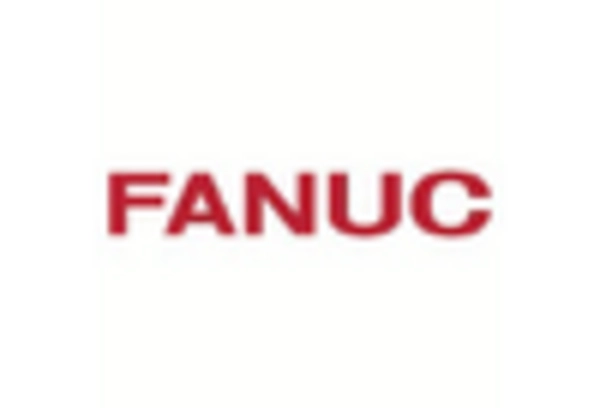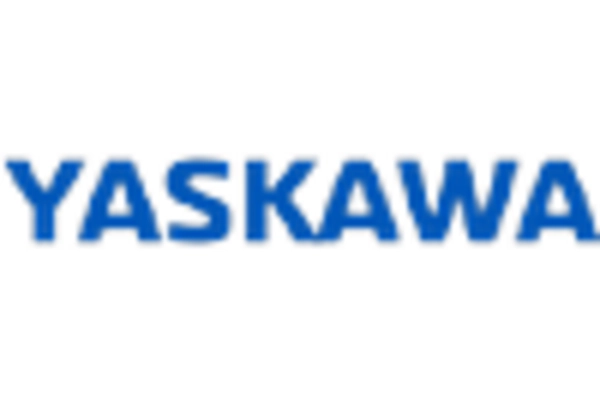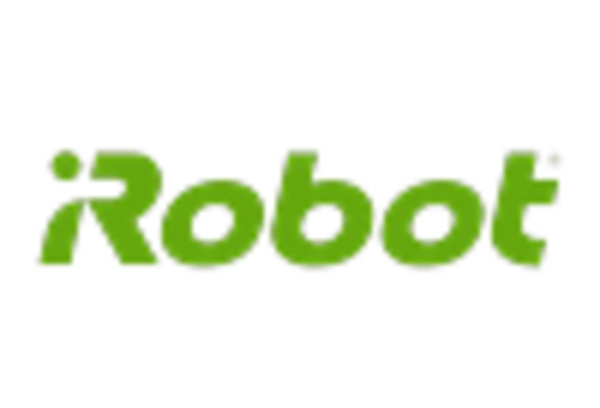Rising Labor Costs
In Italy, the increasing cost of labor is significantly influencing the AI Robots Market. As wages rise, businesses are seeking automation solutions to maintain competitiveness and profitability. The ai robots market is becoming an attractive alternative, as robots can perform repetitive tasks with precision and efficiency, reducing the reliance on human labor. This shift is particularly evident in manufacturing and logistics sectors, where labor costs have escalated by approximately 10% over the past few years. Consequently, companies are investing in robotic solutions to mitigate these costs, leading to a projected market growth of 20% in the next five years. The trend suggests that as labor costs continue to rise, the demand for ai robots will likely increase, further solidifying their role in various industries.
Technological Advancements in AI
The rapid evolution of artificial intelligence technologies is a primary driver for the AI Robots Market in Italy. Innovations in machine learning, computer vision, and natural language processing are enhancing the capabilities of robots, making them more efficient and versatile. As a result, industries are increasingly integrating these advanced robots into their operations. For instance, the Italian robotics sector has seen a growth rate of approximately 15% annually, driven by these technological advancements. This trend indicates a strong demand for sophisticated robots that can perform complex tasks, thereby improving productivity and reducing operational costs. The ai robots market is likely to benefit from ongoing research and development efforts, which may further propel the adoption of AI-driven solutions across various sectors.
Government Initiatives and Funding
The Italian government is actively promoting the adoption of robotics and AI technologies through various initiatives and funding programs. These efforts aim to enhance the competitiveness of the national economy and foster innovation within the AI Robots Market. For instance, the government has allocated approximately €200 million to support research and development in robotics, which is expected to stimulate growth in the sector. Such initiatives not only provide financial support but also create a favorable regulatory environment for businesses to invest in robotic technologies. As a result, the ai robots market is likely to experience accelerated growth, driven by increased public and private sector collaboration. This supportive framework may encourage more companies to explore automation solutions, thereby expanding the market further.
Growing Demand for Automation in Agriculture
The agricultural sector in Italy is increasingly recognizing the benefits of automation, which is driving the AI Robots Market. With the need for improved efficiency and productivity, farmers are turning to robotic solutions for tasks such as planting, harvesting, and monitoring crops. The adoption of ai robots in agriculture is projected to grow by approximately 25% over the next few years, as farmers seek to address labor shortages and enhance crop yields. This trend indicates a shift towards more sustainable farming practices, where technology plays a crucial role in optimizing resource use. The ai robots market is likely to expand as agricultural stakeholders invest in innovative robotic solutions to meet these demands, thereby transforming traditional farming methods.
Increased Focus on Safety and Quality Control
In various industries, there is a heightened emphasis on safety and quality control, which is propelling the AI Robots Market in Italy. Companies are increasingly deploying robots to perform tasks that require high precision and adherence to safety standards. For example, in the food and beverage sector, robots are utilized for packaging and quality inspection, ensuring compliance with stringent regulations. This trend is expected to drive market growth by approximately 18% over the next few years, as businesses prioritize safety and quality in their operations. The integration of ai robots not only enhances operational efficiency but also reduces the risk of human error, thereby improving overall product quality. As industries continue to focus on these aspects, the demand for ai robots is likely to rise.

















Leave a Comment